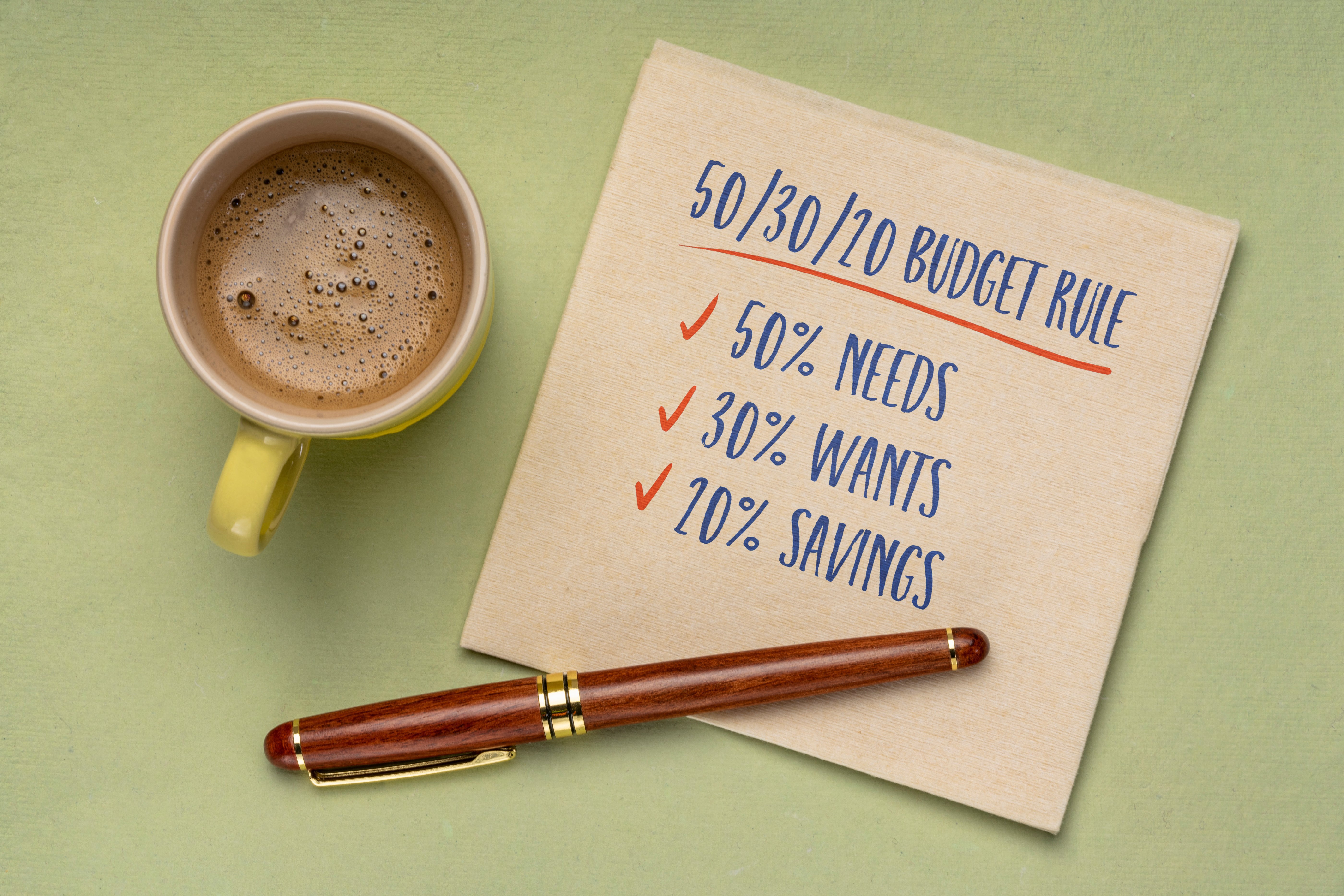End the Monthly Struggle: How to Stop Picking Which Bill to Skip
Every month, millions of Americans play a high-stakes game of financial Tetris, trying to decide which bills can wait until the next paycheck...
Whether you're covering unexpected expenses, making a big purchase, or just need extra cash, our personal loans offer simple, flexible funding tailored to your needs.
Simplify your finances with a loan that combines multiple payments into one. Our consolidation loans help reduce stress and keep your budget on track.
Upgrade your living space with financing designed for renovations, repairs, or remodeling. Our home improvement loans help you enhance your home’s comfort, value, and functionality—on your terms.
Explore expert insights, financial tips, and strategic guidance from the Symple Lending team. Our insights and resource articles are your go-to source for empowering content that helps you make informed decisions on your journey to financial freedom.
Stay up-to-date with the latest press releases, media features, and major announcements from Symple Lending. This section showcases how we're making headlines and driving innovation in the lending industry.
11 min read
Breanne Neely : Nov 5, 2025 12:00:00 AM

Table of Contents
Ever wondered why some people seem effortlessly in control of their finances while others struggle paycheck to paycheck? The secret might be simpler than you think. The 50/30/20 Rule isn't just another complicated financial formula—it's a refreshingly straightforward approach that's changing how people manage their money. Many people find budgets too time-consuming to create or follow, but simple frameworks like the 50/30/20 Rule can make budgeting much easier and more approachable.
Think of it as the "just right" porridge of budgeting—not too rigid, not too vague. This practical framework helps you prioritize your spending without micromanaging every dollar, making financial stability accessible even if spreadsheets make your eyes glaze over. Industry experts recommend using clear budget categories and simple budgets like the 50/30/20 Rule for better financial outcomes.
Did you know that nearly 70% of Americans live paycheck to paycheck, trapped in a cycle where their money disappears faster than morning mist? The secret to breaking free from this financial fog lies in mastering the art of budgeting—your personal financial GPS that transforms chaotic spending into purposeful wealth-building. At its heart, budgeting means crafting a strategic blueprint for how you'll orchestrate your monthly after-tax income, like a conductor directing each dollar to play its perfect part in your financial symphony. By channeling your income into distinct spending categories—fixed expenses, variable expenses, and savings—you illuminate the shadowy corners where your money vanishes each month, finally gaining crystal-clear visibility into your financial landscape.
To forge a budget that actually works for your real life, begin by becoming a detective of your own spending patterns. Dive deep into your bank statements, gather those crumpled receipts, or harness the power of a budgeting app to uncover the truth about where your hard-earned money is really flowing—from essential necessities to those sneaky extras that drain your accounts. This financial archaeology helps you spot the hidden patterns lurking in your spending habits and discover those money leaks where precious dollars are slipping through the cracks, creating opportunities to plug the holes and redirect that cash toward your dreams instead of wasteful spending that leaves you wondering where it all went.
Once you've mapped your income and expenses like a skilled financial cartographer, you can strategically deploy your money to cover your non-negotiable fixed expenses (rent, utilities, and loan payments that demand attention), your flexible variable expenses (groceries, entertainment, and dining adventures), and your future-focused savings that transform today's discipline into tomorrow's freedom. A masterfully structured budget becomes your financial superpower, helping you prioritize what truly matters most, sidestep the quicksand of unnecessary debt, and make steady, unstoppable progress toward the financial goals that will reshape your entire future. Remember, a budget isn't a financial straitjacket designed to restrict your joy—it's your personal money management system that ensures every dollar is working tirelessly for you, building the prosperous, stress-free future you deserve.
The 50/30/20 budget rule offers a straightforward approach to budgeting that makes money management accessible for everyone, especially those who find traditional budgeting overwhelming. This simple framework divides your after-tax income into three categories:
What makes this budgeting method so appealing is its flexibility and simplicity. Unlike complex spreadsheets or detailed tracking systems, the 50/30/20 Rule gives you clear guidelines without rigid restrictions. It helps you balance your present needs with your future financial security.
The beauty of this budget plan lies in how it acknowledges reality—you need to cover essentials, you deserve some enjoyment in life, and you should prepare for tomorrow. For many people who feel stressed about money management, this balanced approach reduces anxiety by providing a framework that's easy to follow and adapt as your circumstances change.
By using these straightforward percentages, you can quickly assess if your spending aligns with a healthy financial pattern without getting lost in complicated calculations or feeling guilty about every purchase.
Allocate a portion of your net income or monthly income to your "needs," which represent essential expenses you can't reasonably avoid. This half of your after-tax income covers:
 Debts, such as loan repayments, are a key part of the needs category and must be prioritized to maintain financial stability.
Debts, such as loan repayments, are a key part of the needs category and must be prioritized to maintain financial stability.
If your necessities exceed 50% of your income, you might need to look at ways to reduce costs or increase income to create a more sustainable budget.
This portion of your budget is for things that make life enjoyable but aren't strictly necessary:
 The wants category gives you permission to enjoy life while keeping discretionary spending in check.
The wants category gives you permission to enjoy life while keeping discretionary spending in check.
This critical section focuses on your financial future:
 For budgeting beginners, starting with even small contributions to this category helps build good financial habits that compound over time. Set specific savings goals and use automatic deposits to help you reach them.
For budgeting beginners, starting with even small contributions to this category helps build good financial habits that compound over time. Set specific savings goals and use automatic deposits to help you reach them.
Ready to put this budget method into action? Here's how to start:
First, determine your actual take-home pay—the money you are paid, such as your paychecks that hit your bank account after taxes and deductions like health insurance or retirement contributions. For self-employed individuals, subtract your estimated taxes from your gross income.
Look back at 1-2 months of checking account, bank, and credit card statements to understand your current habits. This gives you a realistic picture of where your money goes each month. Don't judge yourself; this is simply information-gathering.
Using the 50/30/20 framework, categorize each expense:
Some costs, such as extra loan payments or irregular costs, may be classified as other expenses and should be included in your overall budget planning.
Be honest about what's truly a need versus a want—many expenses we consider "necessary" might actually be lifestyle choices.
If your current spending doesn't align with the 50/30/20 breakdown, don't panic. Start with small changes rather than dramatic cuts. Perhaps move one "want" expense to a less expensive option, or increase your savings rate by just 1% this month. When you pay off a loan or reduce an expense, you can use the extra money to boost your savings or pay down other debts.
Smart budgeting you can stick with isn't about perfection—it's about progress. Each small improvement in how you handle money creates momentum toward greater financial stability.
Setting up automatic transfers to your savings accounts makes sticking to the 20% savings goal nearly effortless. Schedule these transfers for the day after payday so the money is set aside before you can spend it. This "set it and forget it" approach removes the temptation to skip saving in any given month.
Every three months, take a quick look at your expense categories. Are your needs still around 50%? Has your "wants" spending crept above 30%? Regular check-ins help you spot patterns and make adjustments before small issues become big problems.
Numerous budgeting apps can categorize your transactions automatically and show you visual breakdowns of your spending percentages. These tools take the guesswork out of tracking where your money goes and can alert you when you're approaching category limits.
When building your savings, focus first on establishing an emergency fund with 3-6 months of expenses. Once that foundation is in place, contribute to retirement accounts like a 401(k) or IRA. Having clear priorities helps you make consistent progress toward breaking down the 50/30/20 Rule for your situation.
For personalized guidance, consider talking with a financial advisor who can help tailor the 50/30/20 budget rule to your specific situation. Even a one-time consultation can provide valuable insights about optimizing your personal financial plan.
Even with the best intentions, have you ever wondered why your budget seems to have more holes than a fishing net? One of the sneakiest budget busters is forgetting to account for variable expenses—those financial shape-shifters that morph from month to month, like entertainment splurges, hobby expenses, or that spontaneous weekend getaway. These expenses are like financial ninjas, creeping up silently and delivering a surprise attack that can knock your carefully crafted budget completely off its rails if you're not watching your back.
Another budget-crushing mistake that haunts countless money managers? Treating savings like that friend you always say you'll call back—someday, maybe, when life gets less crazy. It's incredibly tempting to focus on the financial fires burning right in front of you and kick that retirement nest egg or emergency fund down the road, but here's the truth bomb: setting aside a predetermined amount each month isn't just smart—it's absolutely crucial for your long-term financial survival. Think of your savings like your monthly rent or electric bill—non-negotiable and essential. Your future self will either thank you or haunt you for this decision.
Finally, here's a budget sin that'll make financial advisors weep: creating a budget and then treating it like a houseplant you water once and forget about. But guess what? Your financial landscape shifts and evolves just like the seasons, and your goals can transform faster than a chameleon in a rainbow factory. That's exactly why you need to review your budget religiously—ideally when each month comes to a close. This monthly financial check-up allows you to see if you're cruising toward your destination or veering into a financial ditch, adjust your spending habits, and ensure you're still marching toward those money goals that matter most. By sidestepping these common budget traps, you'll set yourself up for financial success and sleep peacefully knowing your money is working as hard as you are.
Sticking to a budget isn't always a walk in the park—life has a talent for throwing financial curveballs that can knock even the most disciplined spender off course. One of the biggest budget villains? Those sneaky impulse purchases that whisper "treat yourself" in your ear. These seemingly innocent splurges can snowball faster than you'd expect, creating a financial avalanche that buries your carefully planned progress. Here's your secret weapon: implement a 30-day cooling-off period for any non-essential purchase that catches your eye. If that must-have item still calls to you after a full month, chances are it's a worthwhile investment; if the desire fades, congratulations—you've just saved yourself from buyer's remorse and kept your budget intact.
Another budget-busting challenge comes in the form of those unwelcome surprise guests: unexpected expenses like car breakdowns or medical bills that arrive without an invitation. These financial storms can feel overwhelming, but here's where your emergency fund becomes your financial superhero. Your mission? Build a robust safety net that covers three to six months of living expenses—think of it as your personal financial fortress against life's unpredictable moments. This cushion of cash will help you weather surprise bills without derailing your budget or falling into the debt trap that haunts so many well-intentioned savers. Remember, successful budgeting isn't just about planning for what you expect—it's about being financially bulletproof against whatever curveballs life decides to throw your way.
Did you know that your financial situation is as unique as your fingerprint? Just like no two people share identical life circumstances, your budget should be a custom-tailored financial roadmap that reflects your personal goals and priorities. If you're wrestling with the weight of credit card debt hanging over your shoulders, you might find yourself channeling more of your hard-earned income toward debt repayment—treating those monthly payments like a financial fire that needs extinguishing before it spreads. On the flip side, if you're dreaming of that perfect home with the white picket fence, you may want to supercharge your savings category, building that down payment fund like you're constructing the foundation of your future.
The famous 50/30/20 budget serves as your financial training wheels—suggesting a balanced approach with 50% of your income covering those non-negotiable fixed expenses, 30% for the wants that make life enjoyable, and 20% for savings and debt repayment—but here's the beautiful truth: it's merely your starting point, not your final destination. Think of these percentages as ingredients in a recipe that you can adjust to taste! Whether that means cranking up your savings rate to reach your goals faster, attacking debt with the intensity of a financial warrior, or accommodating higher fixed expenses that reflect your current reality, the magic happens when you create a budget that actually works for your life. The ultimate goal? Crafting a personalized financial plan that supports your unique situation and propels you toward your dreams—whether that's achieving the sweet freedom of being debt-free, unlocking the door to homeownership, or simply enjoying the satisfaction of having more money left in your pocket when the month comes to a close.
Does staring at your monthly expenses feel like trying to solve a puzzle with half the pieces missing? You're certainly not sailing these choppy financial waters alone. When budgeting becomes an overwhelming maze rather than a helpful roadmap, seeking professional guidance can be the lighthouse that guides you to calmer shores. A skilled financial advisor becomes your personal financial architect, crafting a customized budget blueprint that harmonizes your income streams, expense patterns, and those important financial dreams you're chasing. They'll also unlock doors to investment wisdom, retirement strategies, and the countless other threads that weave together your complete financial tapestry.
Think of your local banks and credit unions as treasure chests filled with free or affordable budgeting gems—tools and resources just waiting to transform your financial chaos into organized clarity. The digital world offers a bounty of budgeting apps that act like your personal financial detective, tracking every dollar's journey and keeping your spending story organized. Remember, building a budget isn't a sprint to the finish line—it's more like cultivating a garden that grows stronger with time, patience, and the right helping hands. With the perfect blend of support and smart resources, you'll develop a budget that fits like a custom-tailored suit and paves a golden pathway toward achieving those financial goals that matter most to you.
Ready to see how your spending measures up? Set aside just 15 minutes to review your monthly expenses. Pull up your most recent bank statement and jot down what you spent on needs, wants, and savings last month. Don't worry about perfect calculations—rough estimates work fine for this quick check.
Look at your current spending breakdown and compare it to the recommended percentages. Are you spending more than 50% on necessities? Is your savings rate below 20%? Identifying these gaps isn't about feeling guilty—it's about spotting opportunities for adjustment.
Consider using free online calculators or budgeting apps that can help you visualize your 50/30/20 distribution. These tools can quickly show you where adjustments might help, whether you need to reduce certain expenses or find ways to boost your income.
The 50/30/20 budget rule provides guidelines, not strict rules. Your personal situation might require different percentages initially, and that's okay. The goal is greater awareness of your money habits and gradual improvements over time. Each small step puts you in better control of your financial future.
What matters most isn't perfect adherence to exact percentages, but making conscious choices about your money that align with both your present needs and long term goals.
The beauty of the 50/30/20 Rule lies not in perfect execution but in the awareness it creates. By dividing your income into these three simple categories, you gain a clearer picture of where your money goes and how those choices affect your financial health. Even if your current breakdown looks more like 70/25/5, simply knowing that gives you a starting point for positive change.
Remember, financial well-being isn't built overnight. Start where you are, make one small adjustment at a time, and celebrate your progress. The 50/30/20 Rule isn't about restriction—it's about creating a sustainable relationship with money that serves both your present needs and future dreams.
Disclaimer: The information provided in this blog post is for educational and informational purposes only and should not be considered as financial, legal, investment, or tax advice. Symple Lending is not responsible for any financial outcomes resulting from following the information or ideas shared in this blog. Every individual's financial situation is unique, and we strongly encourage readers to take their own circumstances into consideration and consult with a qualified financial, legal, tax, and investment advisor before making any financial decisions. Symple Lending does not provide financial, legal, tax, or investment advice.

Every month, millions of Americans play a high-stakes game of financial Tetris, trying to decide which bills can wait until the next paycheck...

Ever glanced at your loan paperwork and wondered why there are two different percentage numbers? It's not a typo; it's the crucial distinction...

Did you know that a majority of financial resolutions are abandoned by mid-February? It’s a startling statistic that reveals a crucial truth: the...

Did you know that 63% of Americans rank money as their number one source of stress? It's not just about having enough money—it's about how we manage...

Did you know that the average American spends about $1,500 per year on purchases they later regret? That’s money that could be working toward your...

With the start of the new year, it's safe to assume many individuals have made resolutions and goals to focus on self-improvement and success. From...